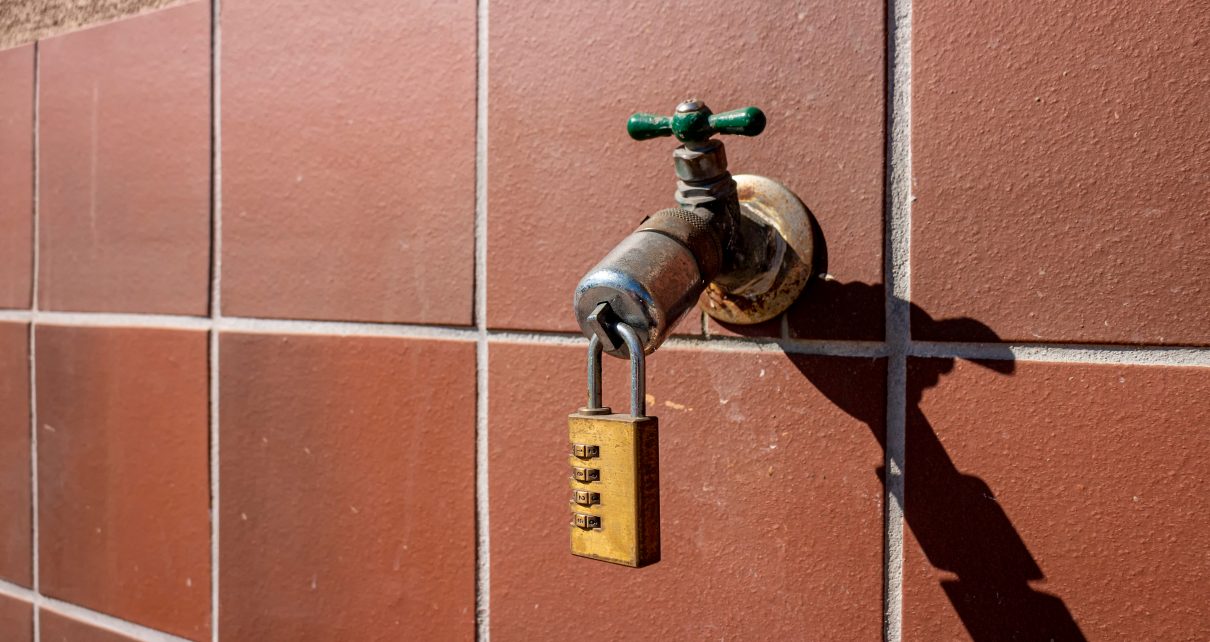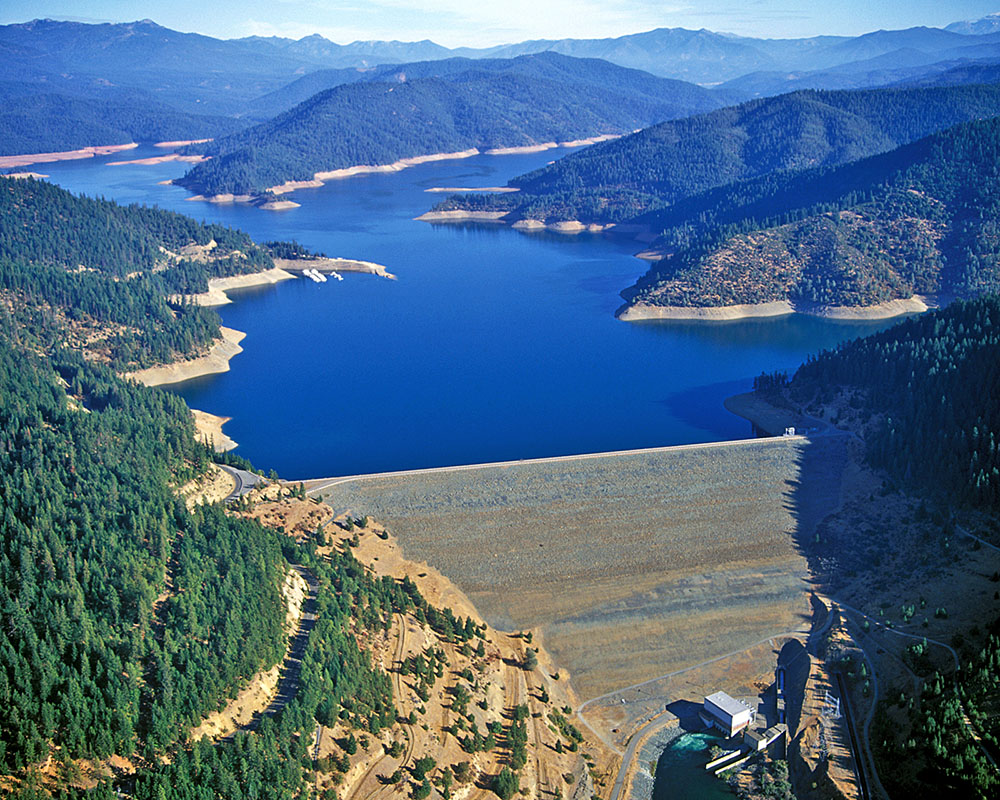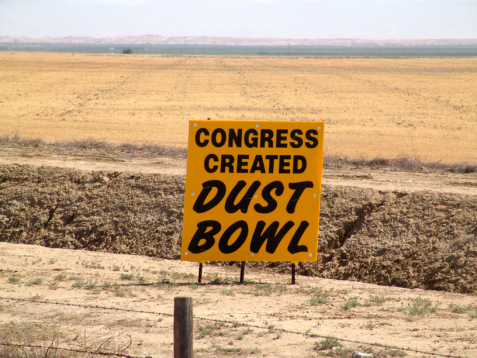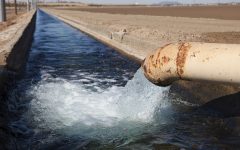
Water rationing. (Photo: Shutterstock, F Armstrong Photography)
Ringside: Water Rationing is the Worst Way to Build Resiliency
Surplus water equals climate resiliency
By Edward Ring, January 11, 2024 2:45 am
 When a public policy decision is flawed, and the reasons it is flawed are simple and obvious, and the consequences are huge and costly, the appropriate response for a concerned observer is to call attention to the looming debacle. Not just once, but over and over and over again. An example of an impending economic and environmental disaster is the special interest driven mad rush to deploy floating wind turbines off the California coast. It’s insane, and we must return soon to the topic of offshore wind in the context of California’s overall energy strategy. In the meantime, let’s take yet another look at an equally distressing policy disaster, the flawed implementation of a flawed piece of legislation, SB 1157 by Sen. Bob Hertzberg (D-Los Angeles), otherwise known as urban water rationing.
When a public policy decision is flawed, and the reasons it is flawed are simple and obvious, and the consequences are huge and costly, the appropriate response for a concerned observer is to call attention to the looming debacle. Not just once, but over and over and over again. An example of an impending economic and environmental disaster is the special interest driven mad rush to deploy floating wind turbines off the California coast. It’s insane, and we must return soon to the topic of offshore wind in the context of California’s overall energy strategy. In the meantime, let’s take yet another look at an equally distressing policy disaster, the flawed implementation of a flawed piece of legislation, SB 1157 by Sen. Bob Hertzberg (D-Los Angeles), otherwise known as urban water rationing.
The “rulemaking” phase of SB 1157 is now in the hands of the State Water Resources Control Board (SWRCB), which soldiers onward in what it might be fair to characterize as blithe indifference to the concerns of urban water agencies throughout the state. It’s hard to imagine why water agencies would object to these new rules, if all they want are new ways to raise their rates, squeeze their customers, and build their empires. Because that’s exactly what SB 1157 is going to do, and yet there is an ongoing and mighty chorus of executives and experts from these agencies who are putting the interests of their ratepayers first, and asking the SWRCB to back off.
California’s Office of Legislative Analyst – an office that is about as impartial as one may find within the massive Sacramento state bureaucracy, agrees. In a report released on January 4, 2024, the LAO has determined SWRCB’s proposed requirements as “too costly and too complicated,” claiming the proposed requirements go “beyond what DWR recommended, thereby reducing suppliers’ flexibility for how to achieve water use efficiency goals.” The recommendations LAO makes include “allow alternative compliance pathways for suppliers,” “simplify the process to apply for variances,” “clarify who should collect landscape data,” and to “align regulations with new law on nonfunctional turf” (to digress: There is no such thing as “nonfunctional turf”).
From the bowels of the SWRCB bureaucracy comes this steaming document, a “Proposed Regulatory Framework” for “Making Conservation a California Way of Life.” This document is only 14 pages long, but nonetheless constitutes a “framework” guaranteed to create full employment for data gatherers, analysts and compliance personnel in perpetuity, employing thousands of people and costing billions of dollars while not producing one drop of new water.
Notwithstanding the mind-numbing complexity of these proposed regulations is their fastidious, panoptic scope. For water agencies to determine their outdoor landscaping water supply budgets, they must categorize every square foot of every residential piece of real estate into “Irrigable Irrigated,” “Irrigable Not Irrigated,” and “Not Irrigated” areas, then calculate water budgets for every unique segment based on a formula that takes into account the targeted standard, the “effective precipitation,” the “evapotranspiration,” the landscape area, and the “unit conversion factor.” All of these variables, needless to say, will be in continuous flux, requiring continuous revisions.
This sort of obsessive micromanagement would have Orwell, Hayek, and Rand turning in their graves, as it induces chronic dyspepsia in the living. Enough already.
An article published on January 5, 2024 in Cal Matters summarizes the LAO’s report, and includes quotes that provide insight into the mentality of the conservation crusaders behind SB 1157. An example of the catastrophe rhetoric that for years has effectively stimulated the collective amygdala of California’s voters comes from Felicia Marcus, a career environmentalist who until February 2019 was chair of State Water Board. “The goal is both to make each locality more resilient to the nightmare curveballs climate change is throwing at us, and to do it in a way that integrates efficiency first and foremost as the most cost and carbon effective measure in the long run.”
“Nightmare curveballs.” Is your limbic system activated yet? But “nightmare curveballs” are precisely why we would NOT want to ration our urban water supply down to a just-in-time minimum.
Also quoted in the Cal Matters article was Heather Cooley, director of research at the Pacific Institute,” stating that “conservation and efficiency are the cheapest, fastest ways to meet California’s water needs as climate change renders supplies more variable and uncertain.” Well… maybe. And maybe not.
An independent study found the estimated cost to implement SB 1157 is $7 billion, to save an estimated 440,000 acre feet per year. You could desalinate 440,000 acre feet for that amount of money, and desalination is the most expensive option. You could also recycle urban wastewater, or invest in ways to harvest, store and treat urban storm runoff, and come up with 440,000 acre feet for far less than $7 billion. According to the Pacific Institute’s own 2022 study, wastewater recycling could yield up to an additional 3 million acre feet per year, and urban runoff harvesting could yield up to another 770,000 acre feet in dry years, and up to 3.9 million acre feet per year in wet years. Put the money there.
Not mentioned in the Cal Matters article in what was an otherwise useful summary of reactions to the current state of rulemaking to implement SB 1157: How much water? Give us the numbers! Could it be that in California’s urban water use trends, the numbers make a compelling case for more supply instead of more conservation? Judge for yourself.
In 1995, per capita urban water use in California peaked at nearly 240 gallons per day. In 2018, per capita water use had dropped to about 160 gallons per day. This precipitous drop is also reflected in total urban water use, which peaked in 1995 at around 9 MAF, when California’s population was only 31.5 million. By 2018, total urban water use had dropped to 8 MAF and has held steady at that level ever since, despite the state’s population having risen to 39 million.
Maybe we have squeezed all the conservation out of California’s urban centers as we can reasonably squeeze out of them, and maybe we should use all that money that SB 1157 is going to cost to increase our water supply, instead of installing the instruments of restriction and rationing.
Surplus water equals climate resiliency.
- Ringside: Will Advocates for More Water Supply Projects Find Unity? - December 11, 2025
- Ringside: EVs and California’s Future Demand for Electricity - December 4, 2025
- Ringside: Politically Viable Water Supply Projects - November 27, 2025





From “Felicia Marcus, a career environmentalist who until February 2019 was chair of State Water Board. “The goal is both to make each locality more resilient to the nightmare curveballs climate change is throwing at us, and to do it in a way that integrates efficiency first and foremost as the most cost and carbon effective measure in the long run.”
What “nightmare curveballs” Felicia??? The volcanic eruptions that increased in 2023, both undersea and above??? The solar flare activity? The ENSO water patterns that steer the weather formations??? All of the above???
See, the PROBLEM with dealing with these “elites” (THEIR words, not mine…) is that they think they can control natural phenomenon via artificial means, and because they are FAILING, they blame the outcome of their FAILURE on those that are adversely impacted by their mandates and legislation…
They are psychopathic narcissists, that have God-complexes that are NOT well-adjusted, and should be banished to the fringes of society, if not MENTAL institutions, because they are a danger to our livelihoods and well-being…
I personally believe that most of the really destructive events that have happened over the last half century have been due to manipulation of weather and tectonic plates via technology developed over the last century. The left then falsely ascribes these events to humanity via lies like CO2 is bad etc.
When technocrats like this talk about impending disasters they are not predicting, they are ANNOUNCING planned events to further their death grip on the country and mankind as a whole.
Little do these people know but they are being exposed and the nightmare will be theirs.
The unelected bureaucrats on the SWRCB who have dictatorial powers to implement the agenda of their deep state Democrat and globalist masters need to be given the boot and the SWRCB bureaucracy needs to be dismantled?
I’ve determined Cal Matters to be a prime example of Advocacy Journalism, they are not unbiased by any means and always seem to side with the Left of Progressive outlook. That means ignoring results of previous policies and praising the mess left behind. This is no different, the State has been pushing conservance and nothing else but arguing about what not to do next.